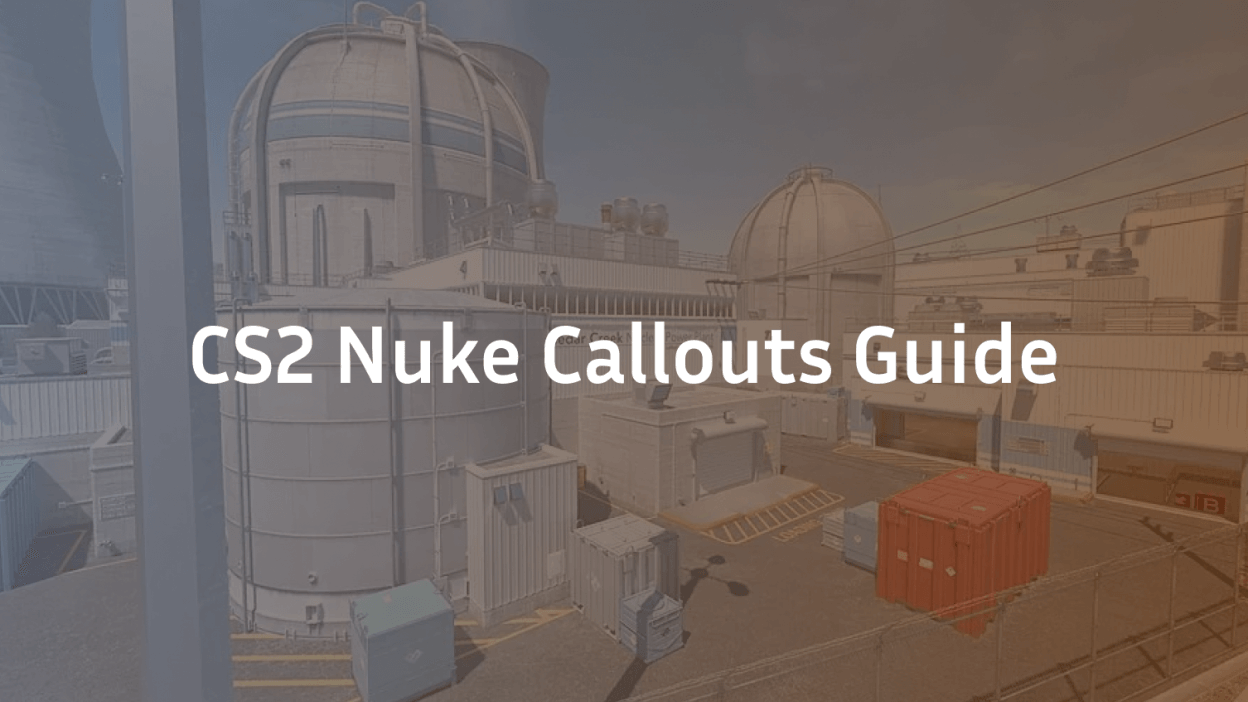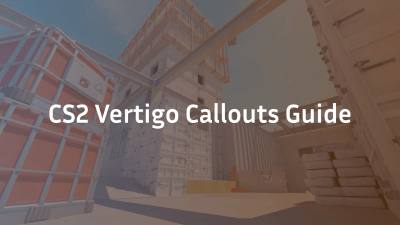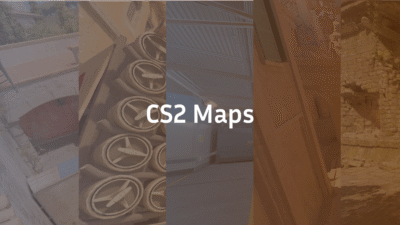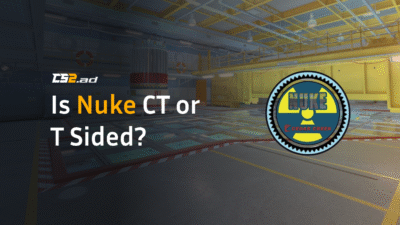If you’re serious about mastering Nuke in CS2, understanding all the Nuke callouts is essential. Known for its verticality and layered layout, Nuke CS2 offers unique tactical depth, but it can be disorienting without proper map knowledge. Whether you’re playing as a Counter-Terrorist or a Terrorist, this Nuke map callouts guide will help you communicate better, rotate smarter, and win more rounds.
We’ve broken down every important CS2 Nuke callout into clear sections — Outside, A Site, B Site, and Connector/Rotations — so you always know exactly where you and your teammates are.
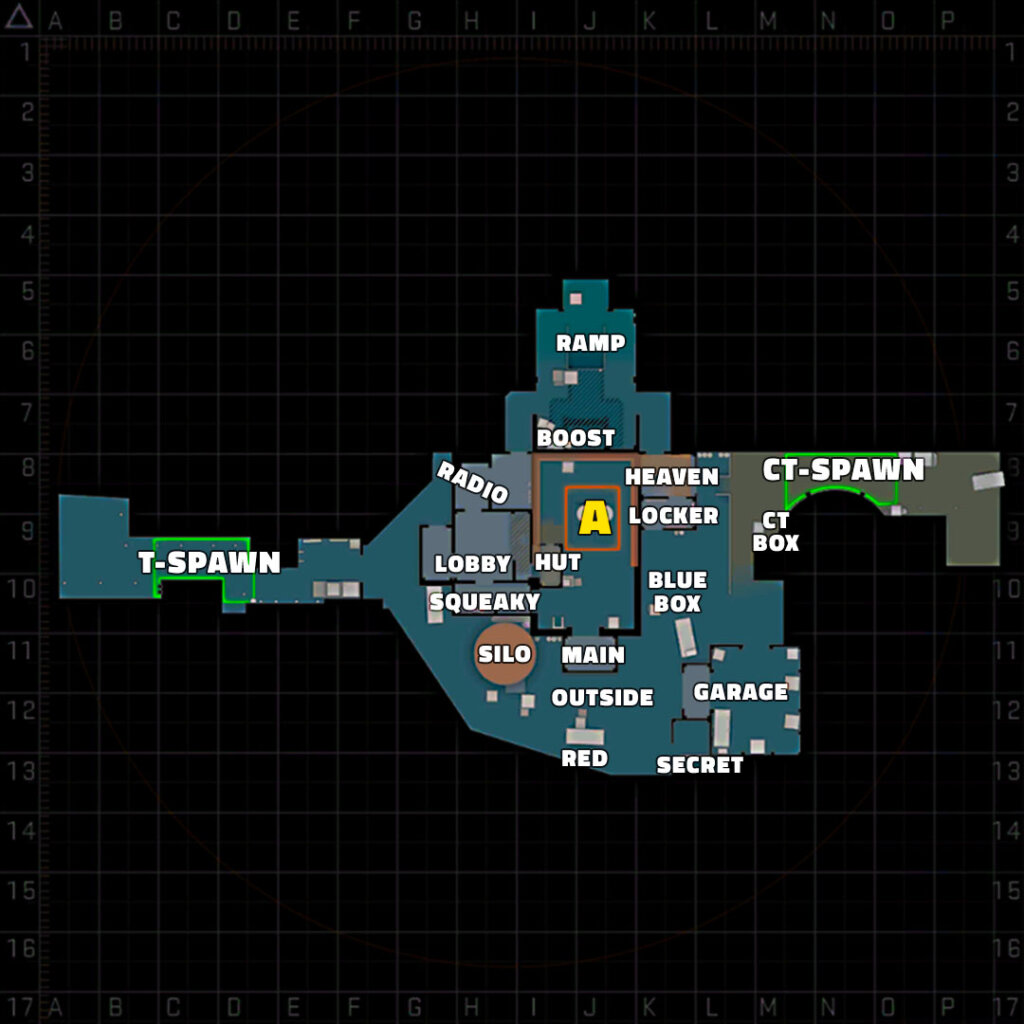
Outside Callouts – Control the Entry
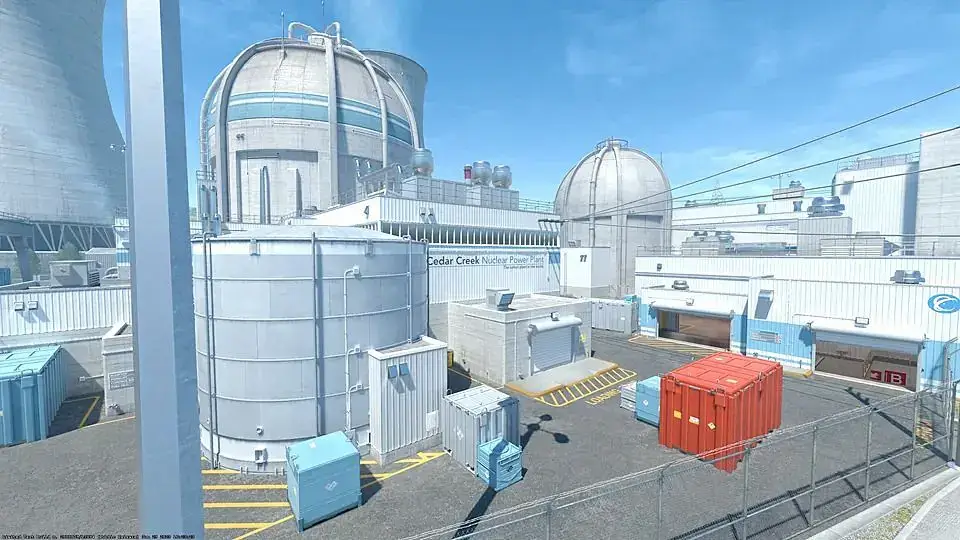
The Outside area of Nuke CS2 is where long-range battles happen, and controlling this part of the map can open multiple paths into both A and B sites.
- Garage – A key control point for CTs to hold outside.
- Red (Red Container) – The red shipping container near T spawn. Common for peeking and crossing to Secret.
- Secret – The stairs that lead down to B site. Critical for sneaky plays.
- T Roof – The rooftop area above T spawn, where Ts can line up smokes and prepare Outside pushes.
- T Red – A small position in front of T Roof with good vision of Yard.
- Yard – The open Outside area between T spawn and Garage.
- Main Entrance (Mini) – Leads directly into A site from Outside, often contested.
- Credit Card – The small box in front of Garage. Used for peeking or cover.
- Boxes / Stack – Stacked boxes near Red Container for boosting.
A Site Callouts – Topside Control
A Site is located on the upper floor and requires strong teamwork for successful retakes or plants.
- A Site – The bombsite itself.
- Heaven – Overlooks A site from above. Accessible by ladder near CT spawn or rafters.
- Hell – The room under Heaven, leads to B via ramp.
- Rafters – The beams around A site. Great for defending or surprise angles.
- Hut – Entry point to A from Lobby. A critical choke point.
- Squeaky – A small door next to Hut that opens to A site. Often wallbanged or naded.
- Mini – Connects A site to Garage. CTs commonly anchor here.
- Mustang – An old term, often used to describe the small platform above Hut.
- Top Hut – The upper part of the Hut doorway. CTs might hold this for a surprise peek.
B Site Callouts – Underground Warfare
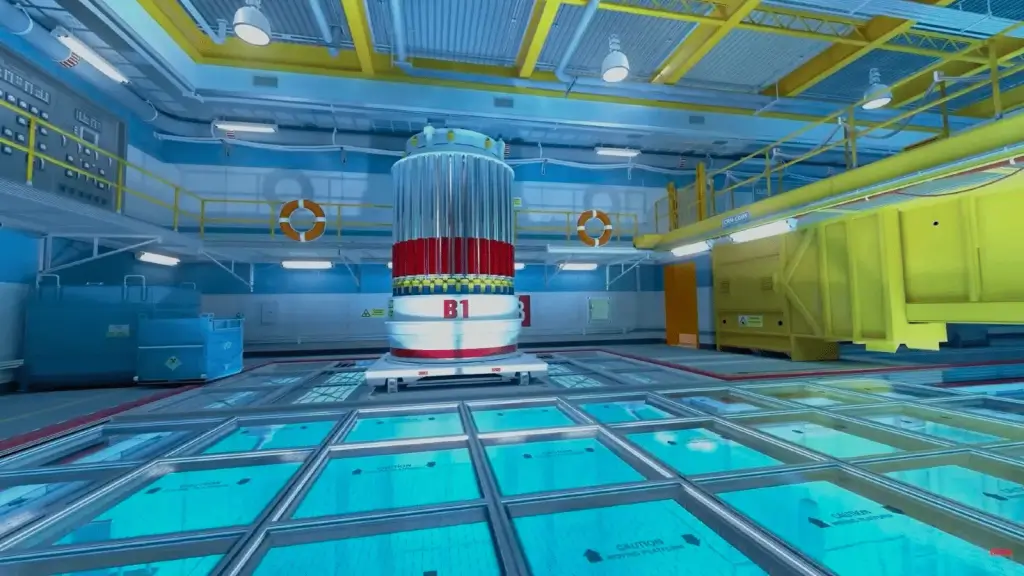
B Site is underground, accessible through Secret, Vents, or Ramp. Proper rotation and communication are key here.
- B Site – The bombsite underground.
- Ramp – A downward sloped hallway from Lobby to B. Popular entry for Ts.
- Control Room (Control) – Overlooks B site with glass windows.
- Decon (Decontamination) – Small hallway leading to B from Lobby/Control. A useful flank path.
- Dark – A tight corner near the bombsite. Often used to hide post-plant.
- Window – Breakable glass area in Control Room. Can be used to surprise enemies on B.
- Double Doors – Two metal doors from Decon to B. Watch for door jiggling or wallbangs.
- Single Door – One door on the opposite side of B. Flank risk here.
- Toxic – Small room near B site used for close-range hold or post-plant.
- Vents – Connect A and B sites directly. Quick but risky rotation.
Furthermore you can learn about sides, Is Nuke CT or T sided in CS2.
Connector & Rotation Callouts – Quick Transitions
Nuke’s rotations are vertical and fast. Knowing these connector callouts ensures you can rotate and support quickly.
- Lobby – Main area for Ts after spawn. Leads to Ramp, Squeaky, and Hut.
- Radio Room (Radio) – Connects Lobby to Ramp. Good audio cue location.
- Trophy Room – A transition area between Radio and Ramp.
- Ramp Room – Leads down to B. Holding here delays T entry.
- Vents – Metal shafts connecting A and B. You can drop down or climb up with the ladder.
- Heaven Stairs – From CT spawn up to Heaven.
- Main – Connects A site to Garage/Outside.
- CT Spawn – Where CTs start. Rotates to Heaven, Main, or Outside quickly.
Why Nuke Callouts Matter in CS2
Whether you’re solo queuing or playing with friends, using proper CS2 Nuke callouts makes a massive difference. Nuke is built around positioning and quick rotations, so clear communication helps you:
- Coordinate multi-layered pushes or retakes
- Call enemy positions precisely
- Avoid friendly fire in confusing stacked areas
- Set up utility for site entry or defense
- Plan smarter rotations between A and B
Tips for Learning Nuke Map Callouts Faster
- Use an Interactive Map – Hover over locations to visually memorize callouts.
- Practice in Casual or Deathmatch – Move around the map and repeat callout names aloud.
- Play with Voice Chat – Reinforce callouts through real communication.
- Watch Pro Matches – See how pros use the callouts and how they rotate between sites.
- Use Radar Settings – Enable the in-game radar names to help reinforce learning.
Final Thoughts
Nuke CS2 is a complex map, but with proper callout knowledge, you can turn confusion into confidence. Master these Nuke map callouts, communicate like a pro, and control the map like never before. Every second and every word count — and now you’ve got the vocabulary to win.
